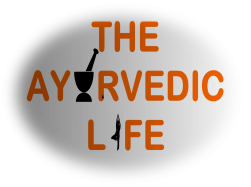Celery Chutney
Celery Thoheyal (chutney) is a side dish inspired by the South Indian style of making chutneys, also known as thoheyal. Vegetables like onions, tomatoes, and ridge gourd, leaves like coriander, mint are cooked with spices and then ground to a coarse paste. This is typically accompanied by rice and ghee, but also goes well with dosas, idlis, rotis etc.
Ingredients:
- 4 celery stalks
- 1 tbsp sesame oil (you can use other oils like canola oil, olive oil too)
- 1 tsp mustard seeds
- 1 tbsp broken urad dhal (split black gram)
- 1 red chilli (you can add more depending on how spicy you want the dish)
- ¼ tsp hing powder (asafoetida)
- ¼ tsp methi powder (fenugreek powder)
- 1 tsp tamarind paste (or 1 tbsp fresh tamarind extract)
- Salt to taste
- 1 tsp jaggery powder/sugar
Method:
- Cut celery into 1 inch sized pieces (in general, you don’t have to chop very finely since you will be grinding the pieces, but the smaller the pieces, the lower the cooking time).
- In a pan, on a medium flame, heat the oil. When the oil starts to heat up, add the mustard seeds. When they start crackling, add the urad dhal, hing, methi powder and red chilli. Keep stirring this so that the dhal gets evenly heated. Ensure that the dhal doesn’t get too dark (wait for the dhal to turn into a golden brown color) or your thoheyal will have a burned taste.
- Add the cut celery, salt and a few drops of water and cook covered on a medium flame.
- When the celery is cooked, add tamarind paste and jaggery and cook a bit more so that the rawness of the tamarind goes away.
- When this cools down, grind it coarsely (fine is okay too, especially if you are serving it to kids who are fussy about pieces/chunks coming into their mouth)
- Enjoy your thoheyal with hot rice and ghee/sesame oil or as an accompaniment to dosas, idlis, rotis, bread etc.
Sweet (urad dhal, jaggery), sour (tamarind), salty (salt), pungent (chilli), bitter (methi), astringent (hing, celery).
Chutneys have a reputation of being oily and pungent and in this form can definitely be pitta aggravating. But it is possible to make a chutney flavorful, yet mild, such that no one taste is completely dominating the dish, especially the pungent, sour and salty tastes which are usually overdone in such dishes, traditionally. Adding less of the salt, sour and pungent tastes and more of the other 3 tastes of sweet, bitter, astringent, can balance even a chutney to be more or less tridoshic.
Effects on the Mind (Gunas – Qualities):
This is largely sattvic, but if spices, tamarind and salt are overdone, can be rajasic in nature. If you store the thoheyal for more than a day, the tamasic quality will start to increase.
Warm, oily (can be mitigated by adding appropriate amount of oil, but this is not a “dry” dish), light, sharp (can reduce sharpness by adding less spices), soft.
Ingredients that tend to produce heating effect are oil, salt, tamarind, chillies, mustard seeds. Ingredients that tend to produce cooling effect are sugar (note: sugar is cooling, but jaggery is warming), hing, methi, celery.
Overall, this recipe may be considered warming. That being said, the effect can be balanced between heating and cooling if a good mix of both types of ingredients is used.


